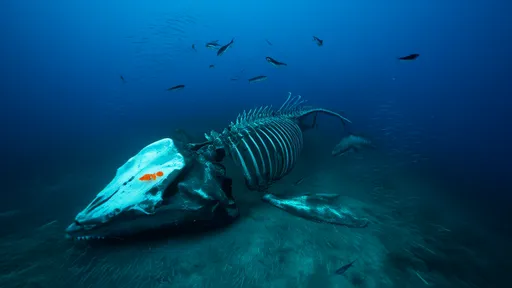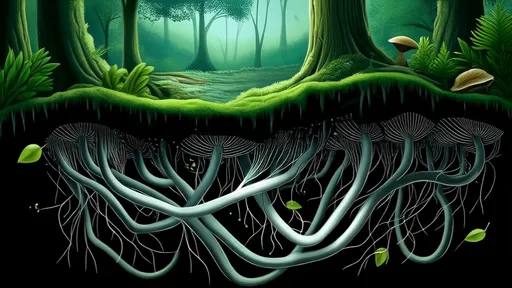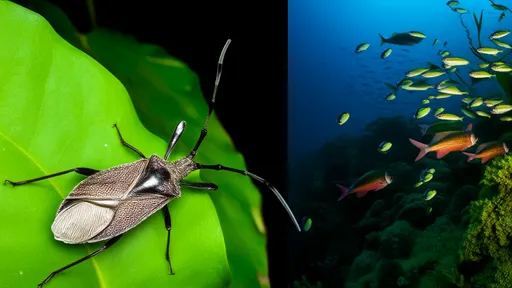The animal kingdom is full of surprises that often defy our basic understanding of biology and behavior. From optical illusions in nature to bizarre evolutionary adaptations, creatures both large and small continue to astonish scientists and enthusiasts alike. Among these revelations, some truths are so counterintuitive they force us to reconsider what we thought we knew about the natural world.
Take the iconic polar bear, for instance. Most people envision its fur as snowy white, blending seamlessly into the Arctic landscape. Yet under a microscope, a startling fact emerges: polar bear hairs are actually translucent, with a hollow core that scatters and reflects visible light. This structural trick creates the illusion of whiteness while allowing ultraviolet light to reach the bear's black skin, an ingenious adaptation for heat absorption in frozen environments. The bears' true color becomes apparent only when kept in humid conditions, as their hollow hairs can develop algae growth, giving captive specimens an unexpected greenish tint.
Marine biology holds equally mind-bending realities. The pistol shrimp, a creature no larger than a human finger, possesses one of the ocean's most extreme natural weapons. By snapping its oversized claw shut at blistering speed, it creates collapsing air bubbles that generate underwater shockwaves hotter than the sun's surface - albeit microscopic in size. These implosions stun prey with concussive force and produce the only known example of natural sonoluminescence, where light erupts from sound energy in liquid. For a brief moment, the shrimp's bubble becomes the hottest place in the solar system.
Birds harbor their own share of anatomical surprises. The common pigeon, often dismissed as urban vermin, demonstrates navigational skills that put human technology to shame. Magnetic minerals in their beaks function as biological compasses, while their eyes detect subtle changes in light polarization invisible to humans. This allows them to create mental maps using Earth's magnetic field with such precision that even displaced hundreds of miles, they'll return home with uncanny accuracy. During World Wars, these avian abilities saved thousands of lives by delivering critical messages across enemy lines.
Perhaps no deception is more elaborate than that of the mimic octopus. This shape-shifting cephalopod doesn't merely change color - it reconfigures its entire body to impersonate venomous sea creatures with terrifying accuracy. By flattening its arms and adopting undulating movements, it becomes a convincing lionfish. When threatened by damselfish, it transforms into a banded sea snake, their natural predator. Researchers have documented at least fifteen distinct impersonations, each tailored to specific threats in its environment, making this invertebrate the ultimate master of disguise.
Even something as fundamental as sleep gets reinvented in the animal kingdom. Dolphins and other cetaceans practice unihemispheric sleep, where one brain hemisphere remains awake while the other rests. This allows constant movement for surfacing breaths and predator awareness. Meanwhile, frigate birds take micro-naps lasting seconds while soaring over oceans for months, accumulating less than an hour of sleep per day without cognitive impairment. These adaptations challenge our very definition of rest and consciousness.
The platypus continues to baffle scientists centuries after its discovery. This egg-laying mammal detects prey through electroreception in its bill, sensing minute electrical fields generated by muscle contractions. More astonishingly, male platypuses wield venomous spurs capable of causing excruciating pain to humans - a rarity among mammals. Their venom contains proteins that don't match any known toxins, suggesting an entirely unique evolutionary pathway for weaponization.
In the insect world, the bombardier beetle has engineered an explosive defense mechanism. When threatened, it mixes chemicals in a specialized abdominal chamber to create boiling, noxious spray fired with precise directional control. The reaction occurs so rapidly that if scaled to human size, the pressure generated would rival artillery fire. This natural chemical weaponry has inspired advancements in fuel injection systems and fire suppression technology.
Migration patterns reveal other extraordinary capabilities. The Arctic tern makes the longest known annual journey of any creature - a round trip of up to 56,000 miles between polar regions. Over its 30-year lifespan, this amounts to three trips to the moon and back. Even more impressive is the bar-tailed godwit's nonstop flight from Alaska to New Zealand, covering 7,500 miles without rest or food in just eight days - a feat requiring anatomical modifications to shrink digestive organs mid-flight while enlarging those needed for endurance.
Perhaps most unsettling is the reproductive strategy of the anglerfish. In some deep-sea species, males are microscopic compared to females. Upon finding a mate, the male bites into her flesh and fuses permanently, his organs degenerating until he becomes little more than a sperm-producing appendage. This extreme sexual parasitism ensures reproduction in lightless depths where encounters are rare, resulting in females often carrying multiple fused males on their bodies.
These examples merely scratch the surface of nature's capacity to astonish. Each discovery not only expands our knowledge but humbles our assumptions about life's possibilities. As research continues, the animal kingdom promises to reveal ever more extraordinary adaptations that challenge the very framework of our understanding, reminding us that reality often surpasses even the wildest imagination.

By /Jun 7, 2025

By /Jun 7, 2025

By /Jun 7, 2025

By /Jun 7, 2025

By /Jun 7, 2025

By /Jun 7, 2025

By /Jun 7, 2025

By /Jun 7, 2025

By /Jun 7, 2025

By /Jun 7, 2025

By /Jun 7, 2025

By /Jun 7, 2025

By /Jun 7, 2025

By /Jun 7, 2025

By /Jun 7, 2025

By /Jun 7, 2025

By /Jun 7, 2025

By /Jun 7, 2025

By /Jun 7, 2025

By /Jun 7, 2025